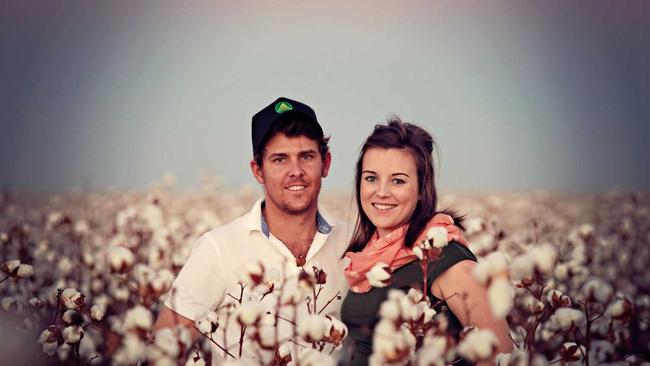Dryland cotton success
Emerald grower Warrick Stent-Smith had a successful first try at dryland cotton.

Business
Don't miss out on the headlines from Business. Followed categories will be added to My News.
THANKS to an early spring rain, a first try at dryland cotton has proved successful for Emerald grower Warrick Stent-Smith.
Mr Stent-Smith, who lives on the "Roper View" property 25km northeast of Emerald, said they generally grew wheat, sorghum, chickpeas and mung beans but last season they decided to put in some dryland cotton.
"We started thinking about cotton seriously when we had an early spring rain," he said.
"We had a full profile come November.
"Sorghum, at that stage, wasn't worth a lot of money. We could have left it fallow but that's no fun if it keeps raining.
"Prices were looking good for the future with cotton, so we decided to give it a go."
He said the upside of cotton was a major reason why they went with the crop.
"A lot of your costs come at the end of the crop so if you don't get any more rain after planting, it is not a huge cost," he said.
"We only had two good falls of rain - only just missed out on the last one but even with that it was still a good crop.
"That's a massive upside compared to sorghum, even with a really good crop and good prices."
Mr Stent-Smith said he asked a lot of questions of local dealers and friends who had grown cotton.
"I used to think that cotton was a complicated crop," he said.
"It was always the irrigators' crop and we never really went near it."
Mr Stent-Smith said after growing it the first year, he found cotton to be a relatively easy crop to manage.
"There are a few things you have to do right," he said.
"Firstly, it's critical to have a good agronomist and good advice on hand in the way of local suppliers and farmers.
"Secondly, seeding rates and precision planting is critical to success.
"Thirdly, you need to spray at the right time.
"The rest of it is pretty straightforward. You just need to contract pick and hope the price is good."
The cotton was planted into an area that had grown chickpeas immediately before.
Mr Stent-Smith said the benefits of Bollgard 3 had made it more attractive for dryland growers.
"I think one of the big keys is the extension of the planting window," he said.
"If you get a full profile in November, you've still got to the end of December to plant, so it is a good option.
"Generally we get our rain in January, February and even into March so you are more likely to grow a successful cotton crop in those wetter months."
The cotton was planted in a double-skip formation with 1m centres, with two rows in and two rows out.
Mr Stent-Smith said the season was generally favourable with more than 100mm of in-crop rainfall.
He said he planned to continue with cotton down the track when the opportunity was right and the season permitted.
"Obviously, you need the early spring rain to make it viable," he said.
"If the season is right and the prices are right, we will plant it again."


